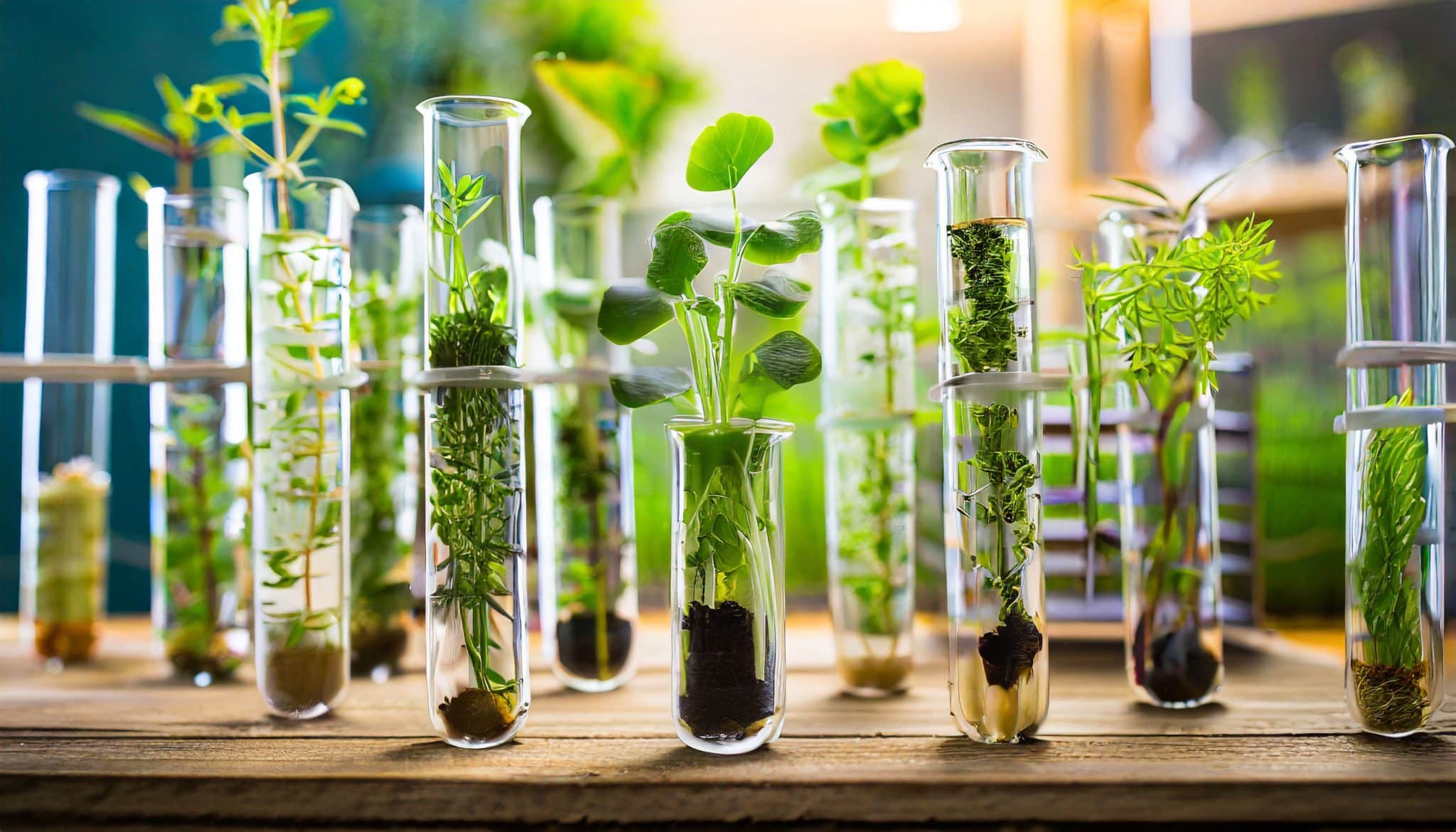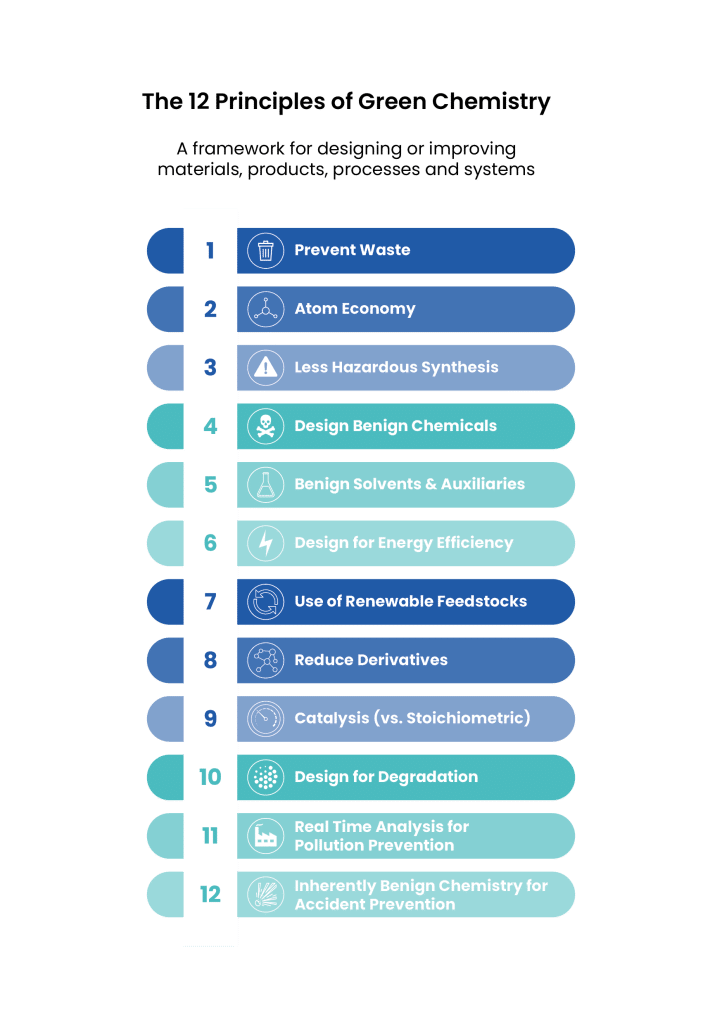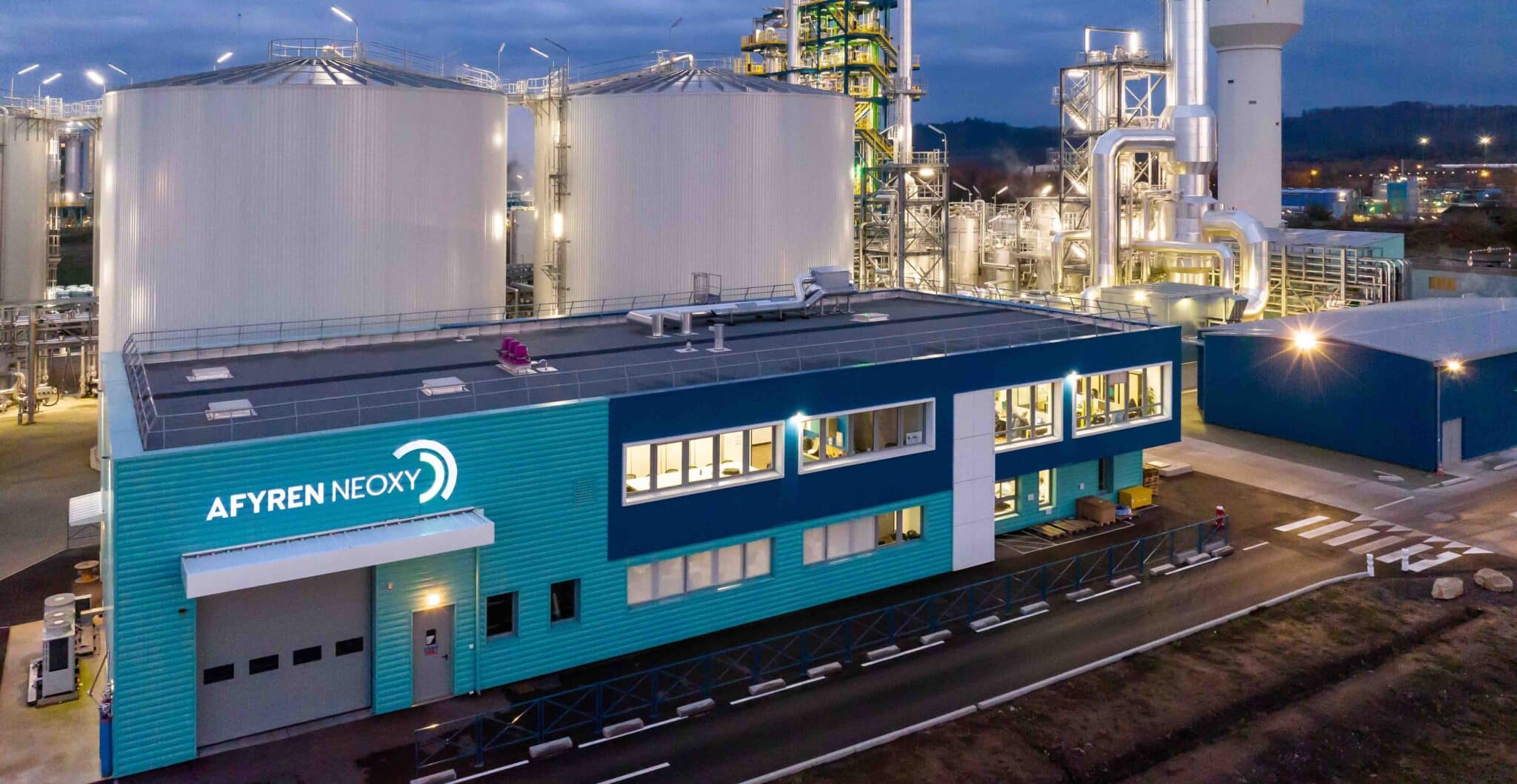Home » Article: Eco-Friendly Innovations: The Guide to Green Chemistry
Article: Eco-Friendly Innovations: The Guide to Green Chemistry

Industry is transitioning to cleaner, greener ways. More than half of companies (51%) say they are committed to sustainability[1], yet it is clear that reconciling a lower environmental impact with economic success involves a lot of difficult choices — just 21% of companies have a clear roadmap for implementing their sustainability strategy.
A more sustainable enterprise is rooted in several pillars, including responsible production, financing, procurement and marketing. Buyers, marketers, and investors need the right information to navigate an ocean of potential projects, understand their benefits and constraints and stand by their consequences. As recently underlined by Mc Kinsey, “it is not easy buying green”.
At AFYREN, we believe that sharing knowledge and experience can contribute to a more sustainable future. In our blog posts, we seek to share expertise we have developed on our own journey toward a sustainable, circular business model.
[1] According to a survey by Sphera: https://sphera.com/sustainability/sustainability-survey-2021/
Distinguishing Green Chemistry and Biobased Chemistry
The chemical industry, a major consumer of oil and gas, has been striving for the past 30 years to overcome its dependency on petroleum, reduce hazardous substances, and create a cleaner, greener chemical industry through new technologies. However, understanding what is implied when collaborating with a company claiming to practice “green chemistry” is crucial.
Contrary to common misconceptions, “green chemistry” does not solely imply plant-based chemistry. While green chemistry principles call for using renewable resources, it involves much more than merely replacing feedstock. Historically, green chemistry, based on 12 principles introduced by Paul Anastas and John C. Warner in 1998, responds to the Pollution Prevention Act, aiming to eliminate pollution through improved design rather than treatment and disposal.
Prevention and eco-conception form the foundation of green chemistry, marking a real development in the industry. Instead of regulating an acceptable level of hazardous substances or managing them once they had been produced as residues, green chemistry aims to “reduce or eliminate their use or generation in the design, manufacture and application of chemical products.”
The seventh principle encourages the use of renewable raw materials, including plants (biomass), to replace fossil resources.
Plant-based chemistry, a key factor of the bioeconomy, involves the production of biobased products, does not automatically guarantee sustainability. However, industrial players in plant-based chemistry or the bioeconomy are, for the most part, practicing green chemistry. It involves using renewable feedstocks and striving for waste prevention, energy efficiency, and less hazardous chemical synthesis.
It’s essential to note that using renewable raw materials requires careful management of valuable natural resources to avoid issues like deforestation or soil depletion. Green chemistry principles serve as a general code of conduct but are not standardized terminology or a norm. Being a self-declared green chemistry player is insufficient to guarantee the sustainability performance of a product or company. Responsible marketing or procurement should be based on a precise environmental assessment, such as Life Cycle Analysis, and certified concepts or terminology.
All Biobased Products Are Not Created Equally
Only 20% of French consumers are familiar with biobased products, and 80% would like more information on these products. If the objective is to replace fossil resources in the supply chain and purchase biobased raw materials, understanding the development and the composition is vital from a consumers’ point of view.
A biobased product is entirely or partially derived from biomass, produced from plants or animals. Biomass can undergo physical, chemical, or biological treatment, emphasizing the need for analysis techniques to determine the biobased components’ amount. Two key measures include bio-based content and bio-based carbon content, both based on European or international standards.
At AFYREN, we produce 100% biobased chemical products from renewable raw materials through a dedicated process following the segregated biobased chemistry approach. Our zero industrial waste process utilizes renewable feedstock, adhering to waste prevention and atom economy principles. The production process involves enzymatic catalysis, a less hazardous alternative to existing processes. Our chemical products have an equivalent end-of-life to market counterparts and naturally biodegrade in various applications.
The environmental impact of our products undergoes evaluation through Life Cycle Assessment (LCA), enable transparency and accountability.
Understanding Biogenic Carbon
Biogenic carbon, stored in, sequestered by, and emitted through organic matter, includes common feedstocks like trees, plants, and soil. Derived from the atmosphere, biogenic carbons arrive via a short cycle in finished products. However, radiation from the atmosphere causes the appearance of a measurable percentage of the radioactive isotope Carbon-14.
Radiocarbon (carbon 14) is an isotope of carbon that is unstable and weakly radioactive. In contrast, non-biogenic carbons stored in fossil fuels lack this Carbon-14. Measuring the percentage of C-14 in products, known as the radiocarbon method, evaluates the share of fossil-based carbon versus biogenic carbon. This method, familiar in archaeological contexts, provides insights into the age and sustainability of products.

In conclusion, delving into green chemistry and biobased innovations requires informed decision-making, rigorous assessments, and a commitment to sustainable practices. AFYREN’s dedication to the 12 principles of green chemistry positions us as leaders in eco-friendly innovations, providing a blueprint for a greener, more sustainable future.
LATEST NEWS
Read our articles and press releases to find out more and discover the world of sustainable industry.
View all articles
AFYREN begins new phase of industrial strategy as first plant AFYREN NEOXY achieves continuous production
Press release
Availability of preparatory documents for the Combined General Meeting on June 17, 2025
Press release
AFYREN achieves “Responsible Care® Confirmed Diagnosis” certification and publishes its second sustainability report
Press release
AFYREN and Südzucker celebrate 5 years of strategic bioeconomy partnership
Press release
AFYREN strengthens its Executive Committee with appointment of Laurent Pou as Industrial Director
Press release
